Bitfinity's Bitcoin Lending Protocols
Discover the potential of Bitcoin as super collateral in lending protocols on Bitfinity's EVM.
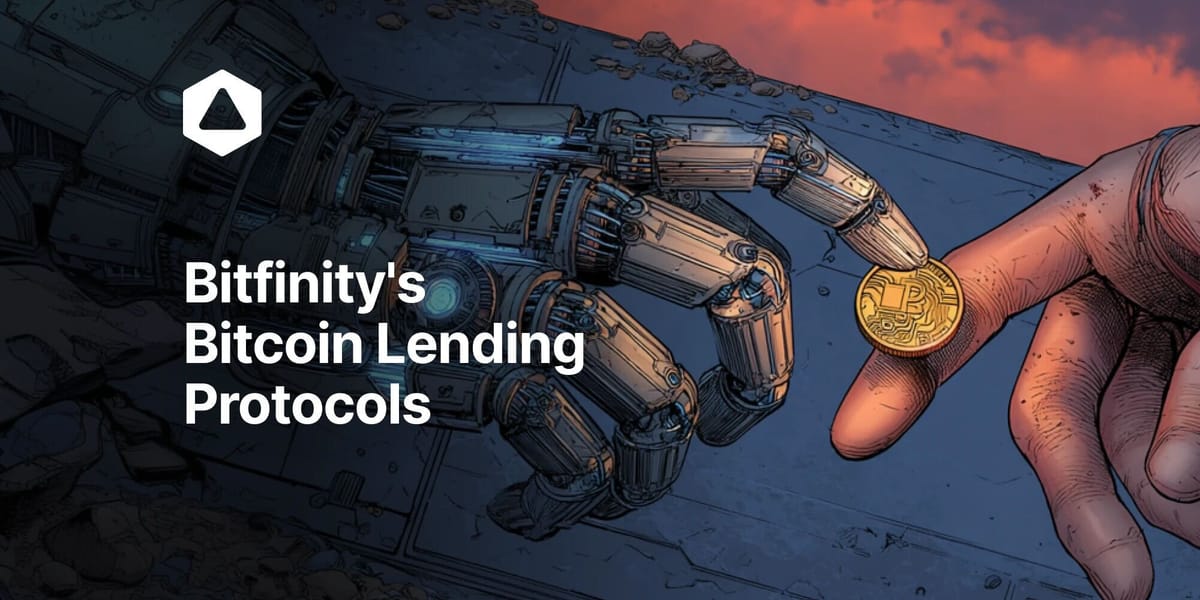
Since the beginning of the crypto era, Bitcoin and cryptocurrencies have revolutionized not only the way we view and use money but also how lending and borrowing can be conducted on a global scale via the internet.
Decentralized lending models have emerged, presenting alternatives to traditional financial systems. With Bitcoin’s unique features, there is potential for it to be used as collateral in new approaches to lending and borrowing. If this is indeed the case, we must understand it better and conduct further research.
Evolution of Borrowing and Lending
The concept of borrowing and lending is as ancient as civilization itself, having shaped economies and societies across different eras. Farmers would borrow seeds or grain from wealthy landowners and repay the debt after the harvest, or the Medici Bank in Florence introduced deposit accounts and letters of credit a little later.
We've come a long way from digital lending, where we now know that traditionally, financial institutions engage in collateral-based lending, where they take custody of assets, as traditional banks are accustomed to managing risks with various securities.
Bitcoin lending
The real challenge lies in the custody of Bitcoin, which banks are currently not equipped to handle. But once this barrier is overcome, banks could naturally extend credit using Bitcoin as collateral, thereby opening up a new market.
In a way, you could see Bitcoin's unique properties as an ideal candidate for use as collateral in lending. This means that it provides several advantages over traditional assets such as:
- High Liquidity: Bitcoin is exceptionally liquid, making it easy to buy or sell. This liquidity is crucial for lenders who may need to liquidate collateral quickly to recover loans.
- 24/7 Market: Unlike traditional financial markets, the Bitcoin market operates around the clock.
- Global Accessibility: Bitcoin can be accessed and traded by anyone around the world, providing a universal form of collateral that isn't bound by national borders or banking hours.
While some traditional banks are beginning to respond by offering services that might include a 50% loan-to-value ratio on the Bitcoin held as collateral, the standard custodial practices of these banks, which might include clauses allowing for the rehypothecation of assets, are often unsatisfactory to Bitcoin holders. As a result, many are turning to institutions that can offer alternative solutions.
Peer-to-Peer Bitcoin Lending
If we take a look at what the protocols we hold dear have to offer, we can understand it is more than what Bitcoin has started: P2P. We know that peer-to-peer lending in the Bitcoin space offers a decentralized alternative to traditional banking and emphasizes the importance of full custody and control over one's assets.
This model has gained traction as a safer and more transparent lending practice compared to historical failures observed in centralized financial platforms, such as the collapse of BlockFi, Celsius, and FTX.
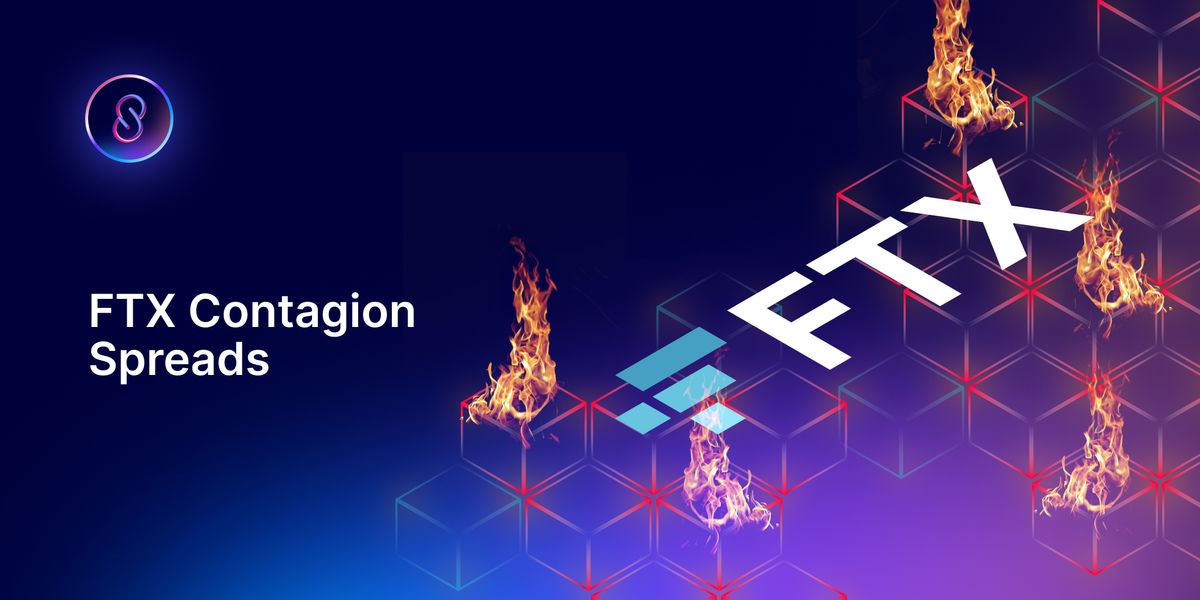
Nowadays, we look at a platform that offers the best of both worlds, as it can be named a hybrid model that caters to different types of lenders, from active participants to those who prefer a more hands-off approach.
Lending Protocols On Bitfinity
There are several lending platforms where BTC or other Bitcoin-based assets can be lent out or borrowed. We take a look at some that run on our own Bitfinity EVM.
Liquidium
First in line is Liquidium, and it is one serious project that provides a solution to a cumbersome process where lending could only be possible if a secure transaction could be created once both parties' details and all inputs and outputs were known.
This process involved the lender creating a loan offer, the borrower accepting it, and then the lender needing to return to the platform to sign the transaction. This created several points of friction:
- Waiting Time for Borrowers: Borrowers had to wait for lenders to return and sign the transaction, leading to potential delays.
- Risk of Loan Drop: There was always a risk that the lender might not return to sign, meaning the borrower wouldn't receive the loan.
- Transactional Complexity: Any transactional activity in the interim could invalidate the setup, requiring the transaction to be rebuilt.
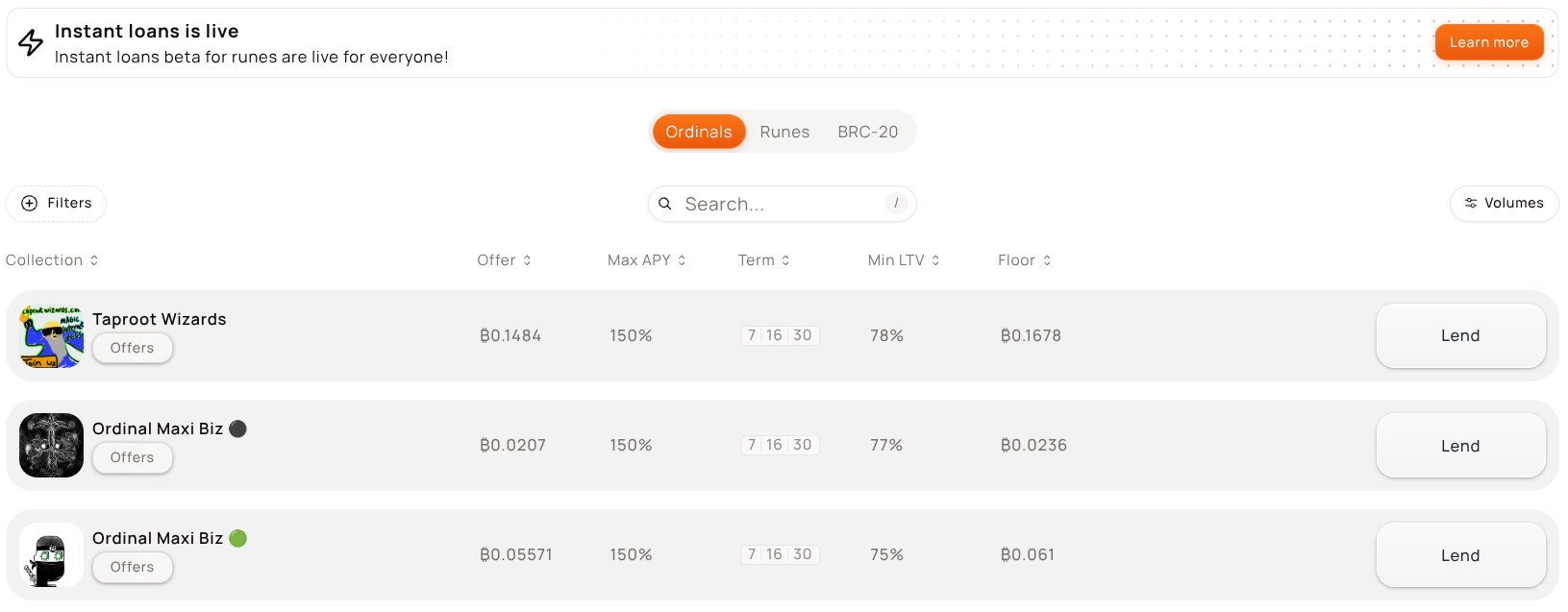
They found a solution in what are 'instant loans', meaning users can access their digital assets quickly and remain liquid. With the integration of the Internet Computer Protocol (ICP) as a facilitator, or an "assistant to the lender," the loan process is significantly sped up.
Here's how Liquidium's instant loan process works
- Users deposit their runes or other supported digital assets as collateral on the Liquidium platform.
- In return for the deposited collateral, users receive an instant loan in the form of stablecoins or other cryptocurrencies, based on their specific requirements.
- Liquidium sets specific terms for each loan, tailored to ensure the security of the platform and fairness for all participants. These terms include:
- A minimum interest rate for each loan
- The duration of the loan
- A maximum LTV ratios for each supported asset
Borrowing Against Bitcoin Assets
At its core, Liquidium is a peer-to-peer borrowing and lending protocol. It allows Bitcoin holders to use their Bitcoin assets, including ordinals, runes, and BRC20 tokens, as collateral to borrow more Bitcoin. This feature is particularly beneficial for those who believe in the long-term value of their assets and prefer not to sell them, even when they need liquidity.
Lending Bitcoin
On the flip side, Liquidium also offers a platform for users to lend their native Bitcoin to borrowers and earn interest on these loans. This is a significant development as it represents a non-custodial way to generate returns on Bitcoin, which is quite novel in the cryptocurrency space.
Lendfinity
The second lending protocol that is running on Bitfinity is Lendfinity. Similar in name choice, the idea for Lendfinity originated at a hackathon in Portugal, where founder Gastão and his co-founder initially aimed to develop a stablecoin protocol but pivoted to explore the lending market.
"We were familiar with the Ethereum Virtual Machine (EVM) and heard about Bitfinity as a Bitcoin layer 2 utilizing the EVM. Recognizing that both ICP and Bitfinity lacked a native lending protocol, we seized the opportunity to fill this gap," said Gastão.
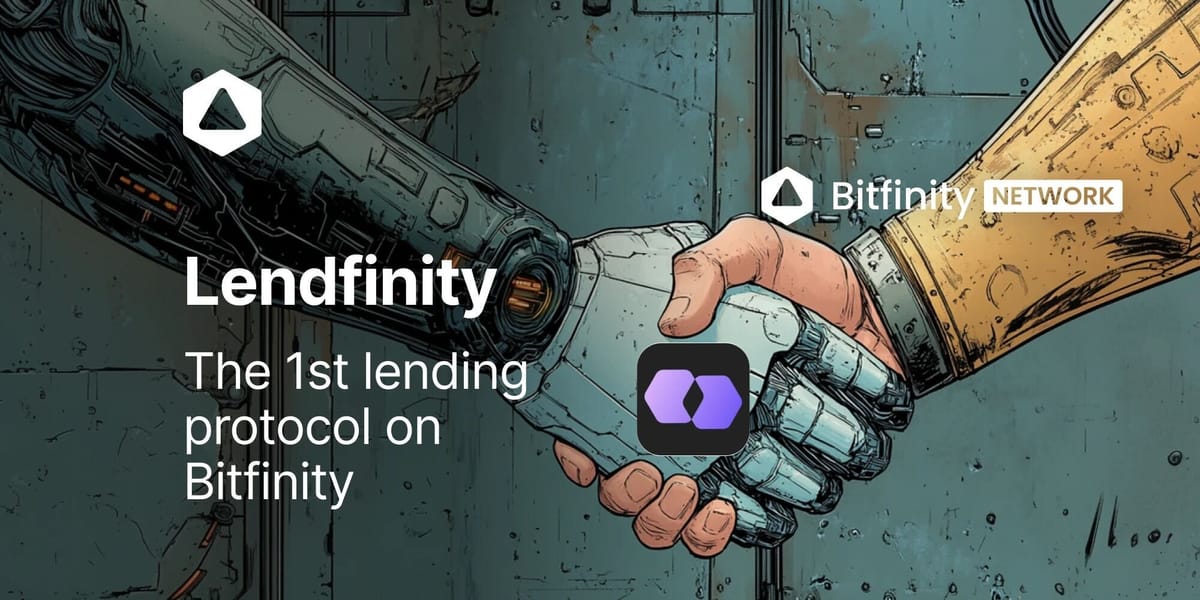
How Can Users Benefit from Using Lendfinity?
- Liquidity Access: Users can borrow stablecoins against their ICP holdings, enabling them to make purchases or investments without liquidating their crypto assets.
- Leverage Trading: For those who anticipate an increase in ICP value, Lendfinity allows for borrowing stablecoins to purchase more ICP, potentially increasing their returns.
- Yield Earning: ICP holders can earn yield on their assets by depositing them into Lendfinity, thus generating passive income from assets that would otherwise remain idle.
Since its mainnet launch, Lendfinity has seen remarkable growth, achieving over $3 million in Total Value Locked (TVL), a milestone that underscores the growing trust and participation of the community.
Currently, Lendfinity predominantly serves users from the ICP community due to the lack of other native lending protocols on ICP, but as we know, once the herd comes, many could find their way to Bitfinity.
Segment Finance
Segment Finance is the third lending platform that also runs on the EVM and allows users to lend and borrow digital assets in a trustless manner. It offers a user-friendly experience, combining the best features of Compound and Venus protocols.
To start earning interest, simply supply your preferred asset and the amount you want to lend. Once you've supplied assets, you can also borrow against them. Any interest earned from supplying can help offset the interest you accrue when borrowing.

Segment Protocol maintains a risk fund for each pool, with a percentage of the protocol's revenue deposited into it. The risk fund aims to counterbalance bad debt and prevent potential market insolvencies.
Future of Bitcoin Lending
These three lending platforms could be onto something. Because we are still early in the Bitcoin lending space or using BTC as 'supercollateral,' we can only speculate what will happen in the future.
We may see traditional financial institutions begin to explore and understand Bitcoin and might integrate it into their systems as another asset class. This integration would likely include using Bitcoin as collateral for loans, mortgages, or other credit facilities, provided the regulatory and operational frameworks are in place.
According to insights shared by Adam Back, a renowned figure in the cryptocurrency world, the safest method of Bitcoin borrowing and lending is through peer-to-peer platforms where transactions are over-collateralized. This method minimizes the risk for both parties involved and ensures a more secure transaction environment.
But DO NOT FORGET: using Bitcoin as collateral involves careful consideration to maximize security and minimize risk. The principles of using Bitcoin safely in lending scenarios highlight the importance of maintaining control over your assets.
ATTENTION: If Unable to Repay the Loan…
If you are unable to repay the loan at the end of the term, the collateral you offered is forfeited to the lender. This might occur if the value of your collateral decreases significantly during the loan term, making it less costly to let the loan default rather than repay it.
Lenders have to be aware of the risks, including the possibility of default by the borrower if the collateral value decreases. However, the high interest rates charged on these loans (often exceeding 100% APY) compensate for the risk, potentially offering high rewards.

Connect with Bitfinity Network
Bitfinity Wallet | Bitfinity Network | Twitter | Telegram | Discord | Github

*Important Disclaimer: The information provided on this website is for general informational purposes only and should not be considered financial or investment advice. While we strive for accuracy, Bitfinity makes no representations or warranties regarding the completeness, accuracy, or reliability of the content and is not responsible for any errors or omissions, or for any outcomes resulting from the use of this information. The content may include opinions and forward-looking statements that involve risks and uncertainties, and any reliance on this information is at your own risk.
External links are provided for convenience, and we recommend verifying information before taking any action. Bitfinity is not liable for any direct or indirect losses or damages arising from the use of this information.




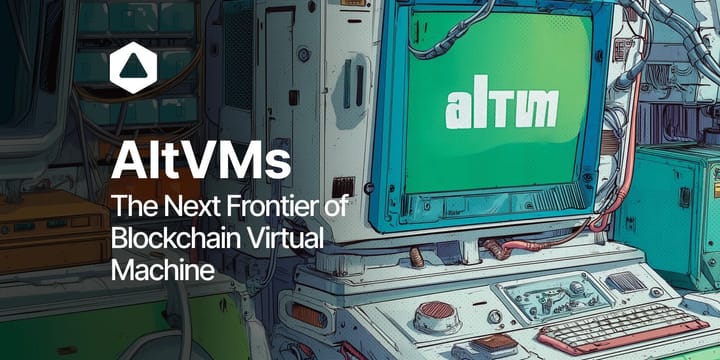


Comments ()